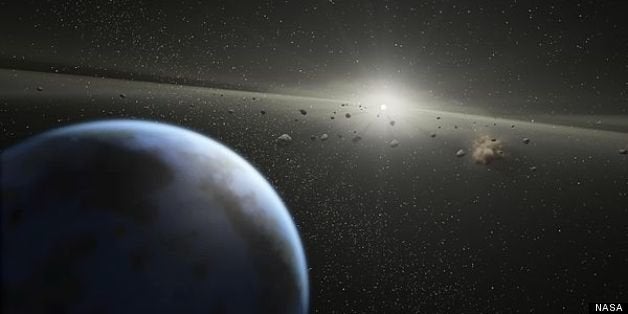
The asteroid belt has long been thought a dull place. But in recent years, astronomers have spotted objects that occasionally spew small amounts of water vapor or dust—possibly because they’ve recently collided with something else. Now, scientists propose that most if not all of these objects may be shedding dust or water vapor because they’re the barely active remnants of comets that are now largely bereft of surface ice. These objects—a total of 11 bodies, which the researchers dub asteroidal belt comets (ABCs)—are either close to the end of cometary life as we know it, or they’ve recently been reactivated because gravitational perturbations of Jupiter (large planet located outside the asteroid belt in each image) have nudged the bodies into orbits that now pass closer to the sun. Along parts of those new paths, heat can penetrate more deeply and reach ice previously insulated by a surface layer of dust (yielding a solar system that today looks like the artist’s representation at top).

On average, the surface layers of dust on those objects average at least 1.8 meters thick, the researchers report in the Monthly Notices of the Royal Astronomical Society. But in the solar system’s early days, before surface ice evaporated from those bodies, comets were both more numerous and more active (bottom), the researchers contend. If that’s true, nighttime skies of the distant past must have been spectacular indeed.
ScienceNOW, the daily online news service of the journal Science